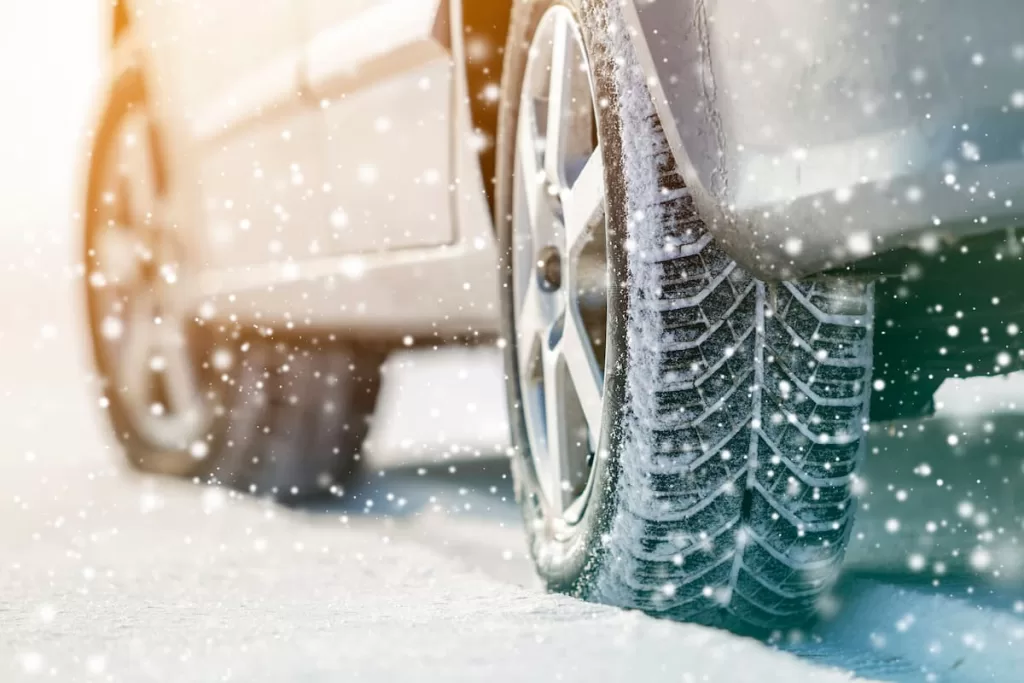As the temperature drops, so does the air pressure present in tires. This unexpected decrease can put drivers at a greater risk of being involved in a car accident if left unchecked.

Let’s consider how cold temperatures can lower tire pressure and increase the chances of St. Louis car accidents. We’ll also look at simple solutions drivers can take to be sure they are driving safely during cold weather.
Cold Temperature and Tire Pressure
Under normal circumstances, car tires are filled with air at a certain pressure level that helps ensure your ride is as safe and comfortable as possible. However, as the temperature drops, so does the pressure inside your tires. In fact, for every 10-degree drop in temp, tire pressure can decrease by 1-2 psi (pounds per square inch). This means that if the temperature outside is 20 degrees colder than when you last checked your tire pressure, your tires could be underinflated by 2-4 psi.
Being underinflated can lead to some serious potential problems, including:
Reduced Vehicle Control
When a tire is underinflated, the shape of the tread and sidewall are altered, creating an unsteady and distorted surface. This reduced contact offers diminished grip and decreased overall traction. The reduced vehicle control can make driving hazardous as braking and cornering are impacted and roads may become quite slippery. This can be even worse if the driver is traveling at high speeds, as it increases the likelihood that they lose control of their car on an icy road.
Increased Stopping Distance
As underinflated tires cannot grip and stop on slick surfaces, greater distances are needed for the car to come to a halt. This means that braking time is significantly increased and reaction time is severely delayed, which can be significantly detrimental in emergency situations.
For example, if multiple cars on a highway move at high speeds and an obstacle suddenly appears up ahead, an individual driving a car with improperly inflated tires may not have enough time or space to react accordingly due to their car’s inability to slow quickly. As a result, this could increase the chances of collisions between two or more vehicles – potentially escalating the severity of such accidents.
How to Reduce the Risk of Car Accidents in the Cold Weather
Now that you know how cold weather affects tire pressure and increases the risk of car accidents, let’s look at five tips to help reduce the risk of getting into an accident during cold weather:
- Check your tire pressure frequently and never let it go under what is recommended for your tires.
- Ensure that your tires are in top condition with plenty of tread depth to offer the best grip on cold roads.
- Slow down when driving in icy or snowy weather conditions to provide yourself more time to react if something goes wrong.
- Avoid using cruise control on slick roads, as it can make it harder for you to stay in control of your vehicle.
- Be prepared for emergencies by carrying items such as a blanket, food, water, and a first-aid kit should you get stuck somewhere due to bad weather.
St. Louis Car Accident Lawyers
Have you been injured in a car accident due to the negligence of another driver? The St. Louis car accident lawyers at The Hoffmann Law Firm understand the complexities of car accident cases and can work to ensure that you receive the compensation you deserve. Contact us today for a free consultation.
Why Choose Us vs TV Lawyers?
Direct Attorney Access
Maximum Settlement Focus
Trial-Ready Cases
Paralegal Handling
Quick Settlement Push
Settlement-Only Focus
Free Consultation with a St. Louis Car Accident Lawyer
Don’t talk to an insurance claims adjuster before speaking with The Hoffmann Law Firm, L.L.C. We can help you avoid making statements that may affect the outcome of your case. The consultation is free; you don’t pay unless we get you money!
